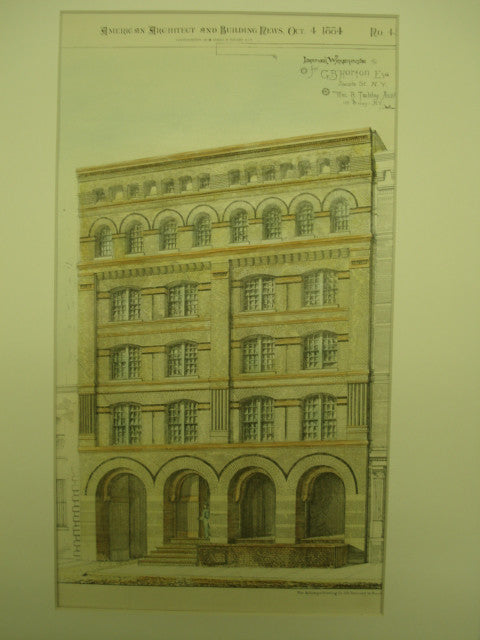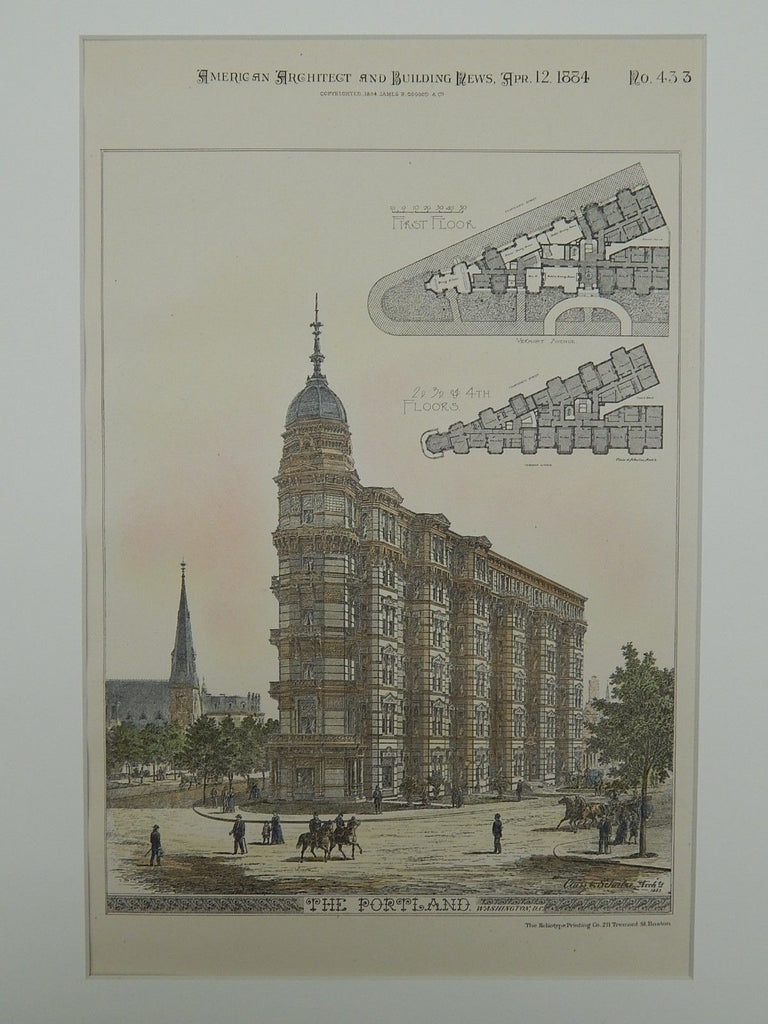News
Libraries and Schools in 1888 August 31 2015
This is the thirteenth installment in our series of posts comparing significant events from a year in United States history with a few of our unique architectural plans from the same period. 1888, the topic of this installment, subsequently marks the thirteenth year of the American Architect and Building News' existence.
Click on the pictures to find the plans below in our store!
The Library of Congress was first conceptualized by James Madison in 1783, but didn't begin to resemble the majestic research facilities we know now until over a century later. The first of these buildings to be constructed was Thomas Jefferson Building in Washington, DC. Though construction on the building didn't begin until 1890, by 1888, plans were already in full-swing for the building. Below is an early original of Paul J. Pelz and John L. Smithmeyer's plans for the Jefferson Building, which looks fairly close to the final version of the building that we know today.
On January 12, 1888, the Midwestern states were hit by an extreme blizzard seemingly out of nowhere. Dubbed the "Schoolhouse Blizzard", it sprang up on the afternoon of a relatively warm day and hit with such severity that 235 people were killed, many of them children on the way home from school. In Minnesota, one of the states hit worst by the blizzard, this hotel at Little Falls would have been right in the epicenter of the storm. It's beautifully detailed plan was designed by architects Gilbert & Taylor.
Workers Win in 1884 August 21 2015
This is the ninth installment in our series of posts comparing significant events from a year in United States history with a few of our unique architectural plans from the same period. 1884, the topic of this installment, subsequently marks the ninth year of the American Architect and Building News' existence.
Click on the pictures to find the plans below in our store!
On May 1 of 1884, the first recognized May Day, the Federation of Organized Trades and Labor Unions in the United States declared the eight-hour workday the mandatory maximum for workers in the United States (without being awarded overtime pay). Though the United States government didn't enact any laws around this issue until about 30 years later, this was an important step in securing workers' rights in the country. The workers at this Leather Workhouse for G. B. Horton in New York, New York would have been especially grateful hearing about this decision. The building was designed by Wm. B. Tubby.
After years of planning and construction, the Washington Monument in Washington, DC was finally completed in December of 1884. Designed by Robert Mills, it is not only the world's tallest obelisk, but the world's tallest stone structure of any shape. Located a few blocks north of the monument, this design for the Portland Building by Cluss & Schulze came out in April of the same year. Be sure to also take a look at our various plans for the Washington Monument here.
The Nation Experiences Tragedy in 1881 August 14 2015
This is the sixth installment in our series of posts comparing significant events from a year in United States history with a few of our unique architectural plans from the same period. 1881, the topic of this installment, subsequently marks the sixth year of the American Architect and Building News' existence.
Click on the pictures to find the plans below in our store!
While 1880 was an election year in the United States, the newly elected president James A. Garfield wasn't inaugurated until early 1881. On the night of March 5, 1881, the National Museum in Washington, DC held an "Inaugural Reception & Promenade Concert" to celebrate the event, as depicted in beautiful detail on the plan below. The museum, designed by Cluss & Schultze, hosted a number of important political events for the nation's capital. However, the night's celebrations would prove to be short lived. Garfield would be shot in July of 1881 at the Baltimore and Potomac Railroad Station in Washington, D.C and succumb to the wound's infection in September of the same year.
On September 5, 1881, the Thumb peninsula of Michigan was the victim of one of the worst fires of the period. Over a million acres were destroyed and 282 people were killed in less than a day. The fire was caused by a combination of factors, the most important being the era's damaging logging techniques that took place throughout the area. A short ways south in Detroit (which was luckily just out of the fire's range), this gorgeous residence was designed by prominent architects Mason & Rice for an unknown client.






